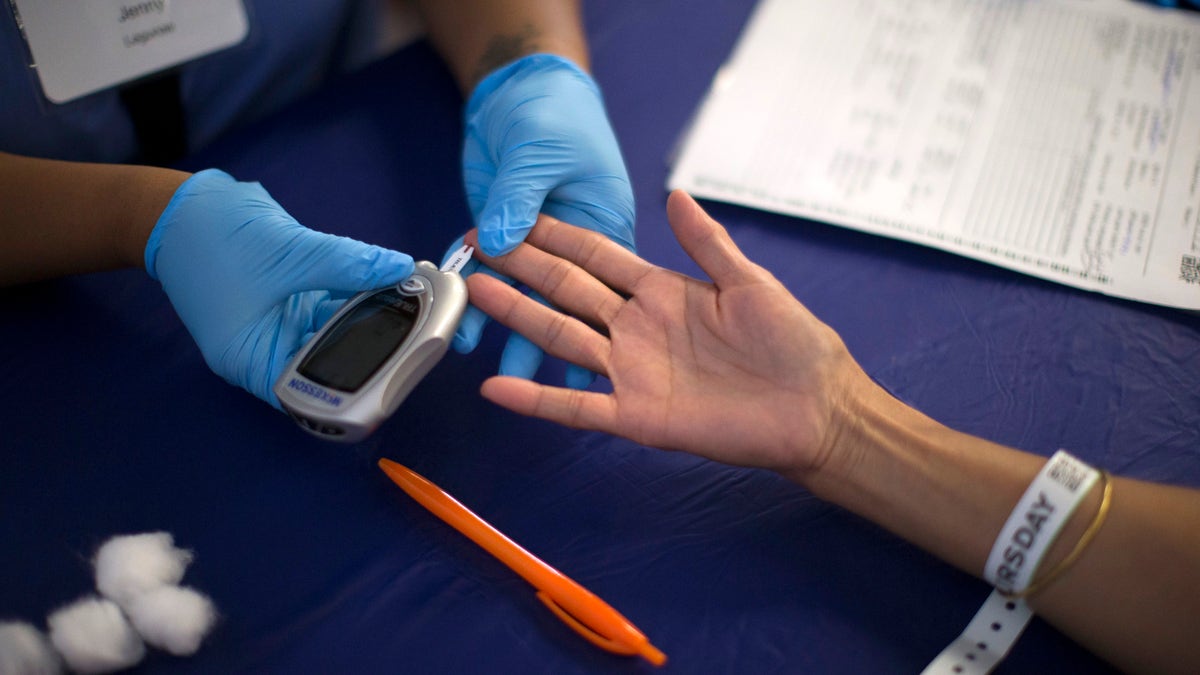
A person receives a test for diabetes during Care Harbor LA free medical clinic in Los Angeles, California September 11, 2014. REUTERS/Mario Anzuoni
Earlier screening, diagnosis and treatment of type 2 diabetes may decrease the risk of cardiovascular problems, hint results from a computer model.
The timing of the diagnosis and the start of treatment appeared more important than the actual intensity of treatment, the researchers reported online May 18 in Diabetes Care.
“Actually, though it seems intuitive, the evidence for screening for type 2 diabetes is really not strong,” said lead author Dr. William H. Herman of the University of Michigan in Ann Arbor.
“The ideal study to look at screening for diabetes would be to screen a large population, diagnose and treat half, and to not tell the other half that they have diabetes and follow them over time and compare outcomes,” Herman told Reuters Health by phone. “Of course that study would be ethically unacceptable.”
The U.S. Preventive Services Task Force (USPSTF), a government-backed panel on preventive healthcare, recently proposed an updated recommendation to screen people for abnormal blood sugar and type 2 diabetes if they are at an increased risk. That includes anyone age 45 and older.
One way to try to estimate the benefit of early screening is to use a computer model, which simulates the progression of diabetes and its complications, resulting health problems, quality of life and costs.
For the new estimates, Herman and his coauthors used data from a large European study of people age 40 to 69 without known diabetes who were screened and treated for the condition. In the original study, some participants who tested positive were treated intensively while others were treated routinely, and the authors found no difference in cardiovascular outcomes or death five years later.
The researchers used a computer model known as the Michigan Model to estimate what may have happened to the participants over the same five year period if they had not been screened, and their diabetes diagnoses had been delayed by three or six years.
If screening was delayed by three years, the researchers estimated that about 11% of people would likely experience a heart problem within five years, compared to about 8% when screening wasn't delayed.
If screening was delayed by six years, they estimated that about 13% of participants would experience a heart problem over the five years.
The USPSTF would not include a modeling study like this in its reviews, Herman said.
Richard Kahn of the University of North Carolina School of Medicine in Chapel Hill told Reuters Health he disagrees with the new findings.
“We don’t know very much about the model whatsoever,” based on what is included in the paper, said Kahn, who was previously the chief scientific and medical officer of the American Diabetes Association.
The Michigan Model may not reflect actual biology or the way diabetes progresses for all people, he said.
Kahn has also researched the potential benefit of earlier screening for diabetes, and “I would be hard pressed to believe the three years makes a big difference.”
Appropriate therapy must begin at diabetes diagnosis, but the exact point when screening happens is less important, he said.
Instituting more screening earlier in life would be costly, and may not have enough benefit to outweigh the cost, he said. A similar debate has centered on mammography for younger women in recent years.
